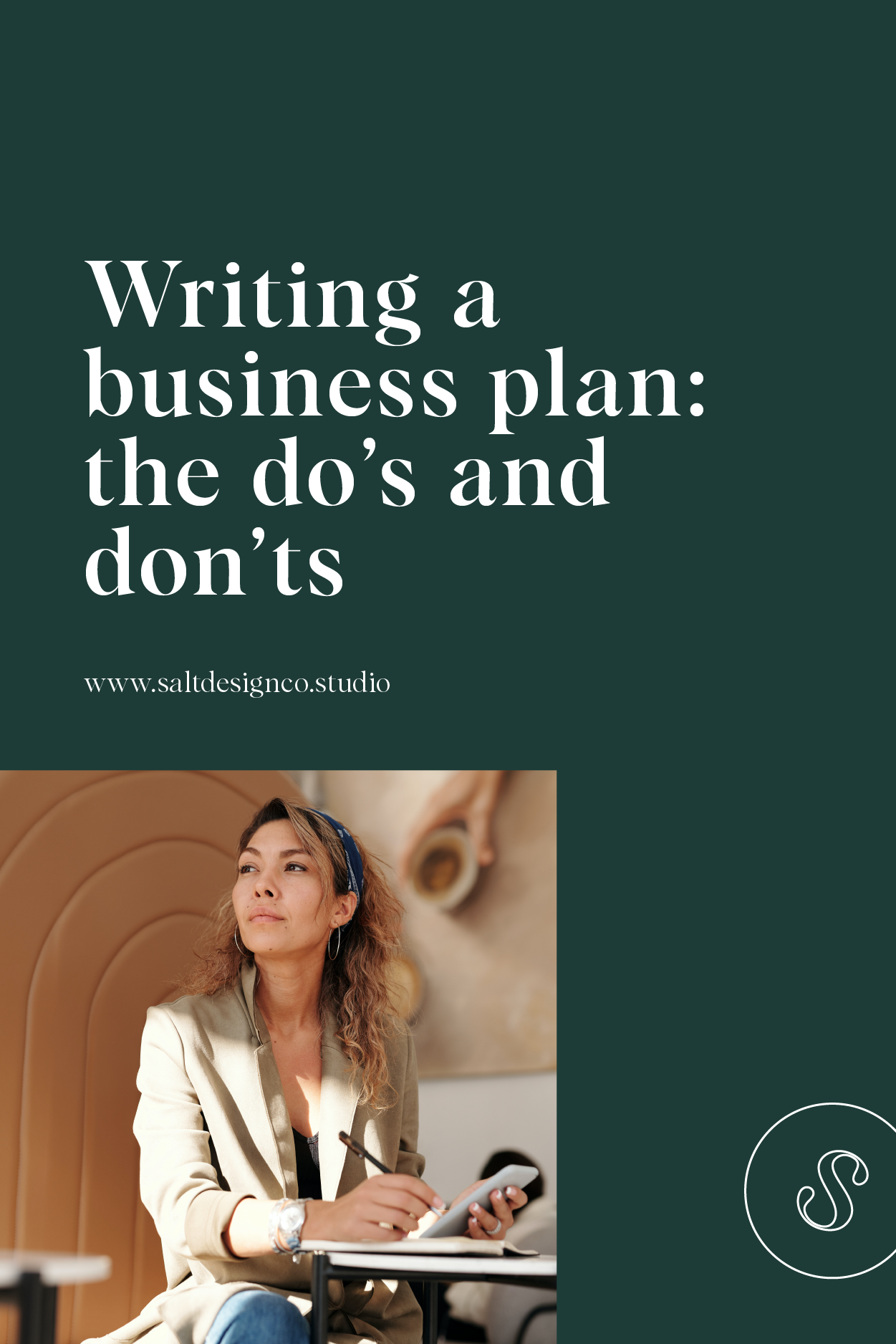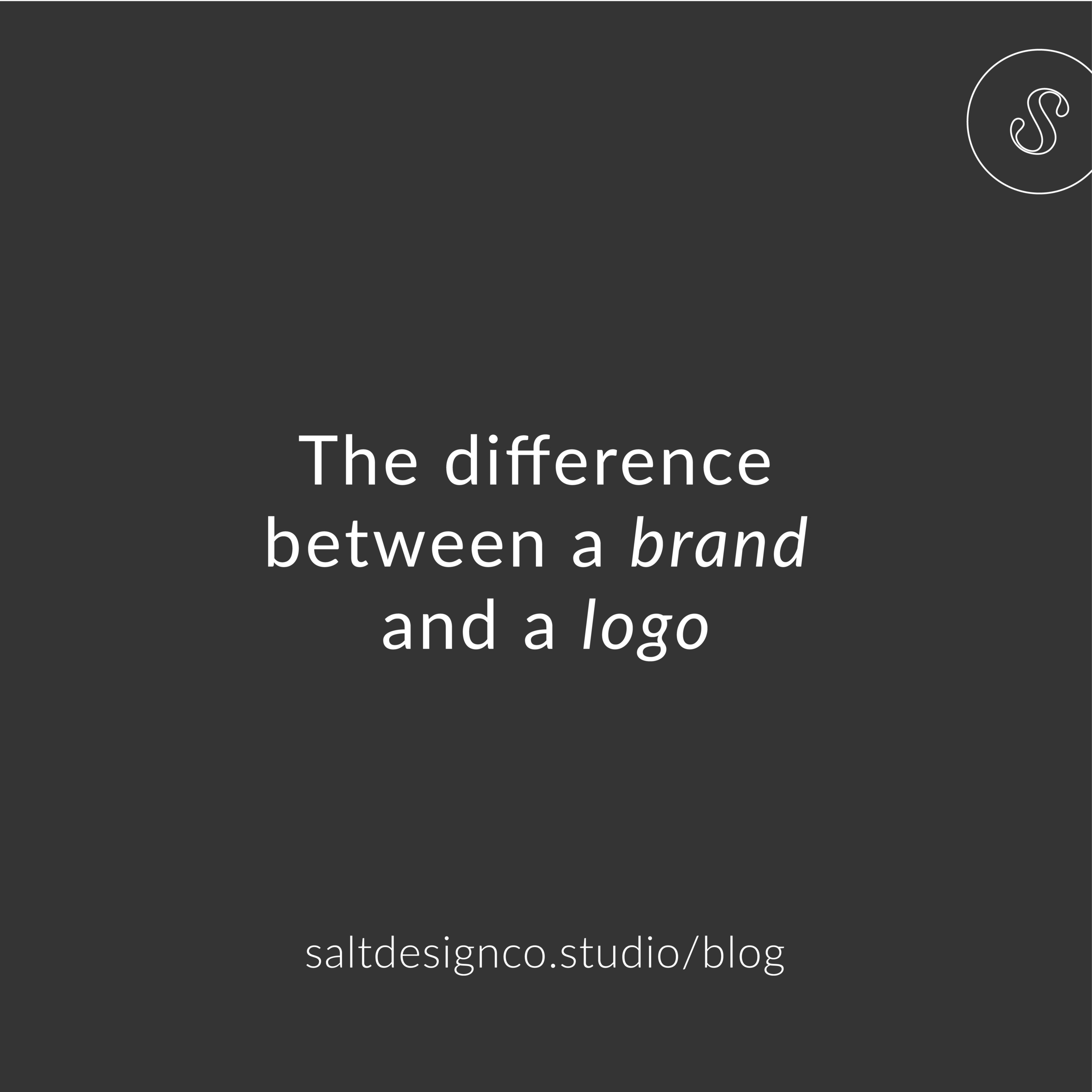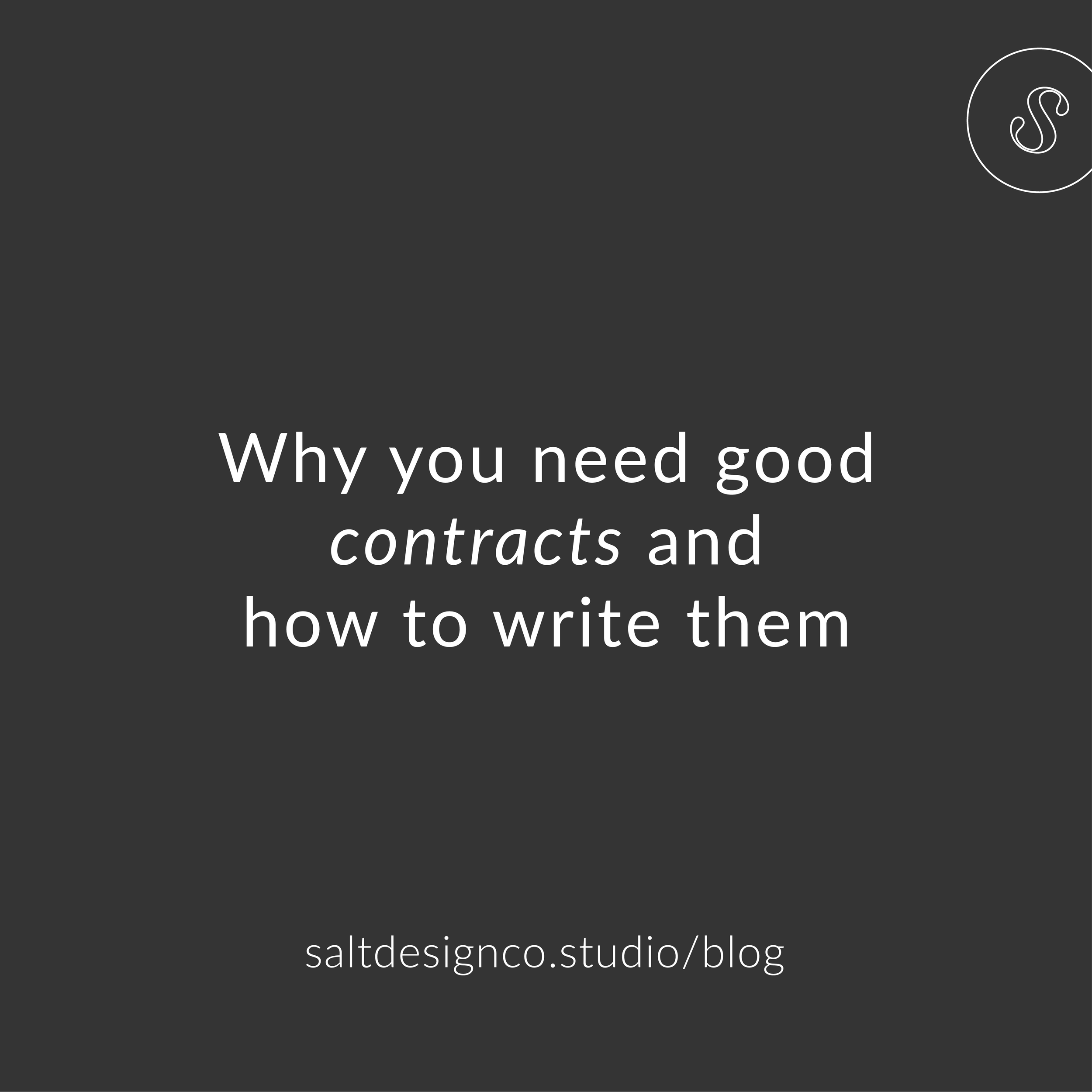Writing a Business Plan as a Small Business Owner
When you’re in your first year of life as a small business owner, you might feel inclined to write a business plan. Depending on the business, we’d like to suggest that you…. don’t.
Hear us out. If you are starting a services based business or a business that doesn’t need a loan or any other kind of capital within the first year, your business plan isn’t going to be seen by anyone and therefore can be flexible and adapted to your needs.
So while it’d be useful for you to figure out a lot of the items that are in a business plan, your answers to those items are bound to change within the first 6 or 12 months and you’ll be back to square one rewriting it.
What’d we’d like to suggest instead is that you look at what would be really valuable for you to explore in a business plan, and then focus on developing those ideas through your brand strategy.
Having written 3 versions of our business plan over the years we’ve thought through each section very thoroughly and had it reviewed by individuals with more business experience and education than us.
What we can say for sure is that we know 1000x more about our business now than we did in months 1-6, and can therefore make a much more informed and proven plan that has real use and impact for our business.
In those first 6-months the main things we need to cover were much closer to a brand strategy, because ultimately that’s what we needed to solidify, and doing market research of financial predictions just wasn’t realistic or feasible for us. We didn’t know what market we’d niche ourselves into, and we had no way of estimating what money we’d be making. So we could guess, and we could have spent time and money on figuring those things out, but really, what was the point?
Instead we suggest focusing on the items that help you grow your brand and get to know your business better.
And of course, take all of this with a pinch of salt (hehe) because if you are a product based business or are looking for financial support you will need to have a more formal business plan in place.
So, let’s go through the items we do suggest covering in your business plan if you’re in your first 1-12 months of business as a solo entrepreneur, freelancer, service provider, or similar.
Your business plan (or brand strategy!) should focus on:
1. The values your business holds dear
What do you, as a business, value? Is it supporting others. Is it helping them to be healthier? Is it getting more people active? Good customer service is no longer a real value - that should be a staple in your business. So think on it, get specific and dig deep.
To learn more about brand values, read this blog post.
2. Who your ideal clients/ demographic are
Another toughie, and a chance to get really specific - you're going to need to make some sort of personality profile that really explains who this person is. You won't be excluding anyone by focusing on a specific person, and in return you'll be able to better attract the people that will LOVE what you do, and therefore be your biggest champions, your number 1 fans, and your perfect customer. They'll buy from you, they'll rave about you, and your business will thrive because of it!
Learn how to identify your ideal clients using this blog post.
3. The purpose of your business
What are you here to do? What is the core purpose, and mission, behind your business? This one should be a little easier to get onto paper, and can be a higher level answer. For us, it's empowering small business owners through design. That's our mission statement, and every business decision we make comes back to that.
4. What makes your business unique
Also known as your unique selling point, or USP, in fancy biz jargon. This is important in order to recognize how you are going to stand out from a saturated market, which let's be honest, most industries and markets are. It can be a small difference though, and again, you probably already know this, because it is quite possibly the reason you started your business. If you're struggling to identify this one, make it personal. Every one and anyone could be doing what you do, but it's different, because of you. So what about you running this business makes it different?
As an idea, for us, that often comes through in personality and the general atmosphere of our business. We don't like formality, we want to be working with our peers, and that's what makes us different. It impacts every part of our business, but it's just us being our whacky, kooky, sarcastic selves.
5. The personality of your business, and how that translates to language and images
The fun one! yay! Similarly to your ideal client profile, it's great to have a brand personality profile. This one is going to feel odd, especially as the owner of your company - as so many times you might think that the company personality is the same as yours, but think about how it differs, what language the business should be using, and make a little avatar for the business. It will help you to separate things out in your head, and will give you a reference whenever you're writing in the brand voice (which will be every day by the way - because your emails and social captions should 100% be in your brand voice).
6. The brand messages your business wants to tell the world
Finally, with all of that information you can start to write out the key messages or brand messages – a.k.a what your business wants to tell the world. Most often your brand messages are highly informed by your brand values the unique aspects of your products or services. Once defined, they’ll help you craft copy, connect with customers on social media and express the right things to attract the right people.
For a full breakdown of brand messaging, take a look at this post!
Once you’ve crafted your brand strategy… now what!?
With your brand strategy in hand you should have a lot more confidence and clarity about your business – essentially you have a plan to use for all future aspects of building and growing your business. You can use it to inform decisions about your visual (or brand) identity, your website design and content, your marketing plan… everything!
Maybe once you’re a few years in or looking for a loan to expand the business you'll need to write a proper business plan. Maybe not! Either way we recommend starting here with the brand strategy and getting to know your business a little better first. We hope you’ll agree once you’ve gone through the process!
If you are looking to write a business plan right now, here’s our top do’s and don’ts!
DO:
Get help! Resources like Small Business B.C can help review your business plan as you write it and offer this service for a very affordable rate. They’ll guide you through the process and connect you with a local bank to ensure you’re writing a plan that’s targeted towards the person reading it on the other end. They even have a template you can start with!
Think about the person at the bank and what they have time or energy to read. Vancity also have a guide and template of their own but one of the biggest tips we learnt through our own business plan writing process was to create a very large summary at the beginning for the very first person to read it. They’re much more likely to pass it on after accessing a (thorough) overview, and the second or third person to read your business plan will be the person to read the whole document.
Get your financial ducks in a row – ensure you have a good credit score and will be eligible for the loans you’re applying for before writing your business plan. If you aren’t eligible after all of that work it’ll be quite a disappointment and feel like you’ve wasted a lot of time.
Shop around! There are so many resources and banks that want to work with you and help you.
DONT:
Rush the process. It’s going to take time to write a good business plan, so don’t try to get it all written in one weekend. You’ll need to do research and treat this process like your back in school writing a paper (!).
Forget to add personality to the document! You want to showcase the business and really sell it to the bank, so feel free to add personality and be more informal than you might have initially felt okay being. We’re not saying you should be too casual, but act human and show the personality and strengths of the business throughout the plan to catch the readers eye.
Go it alone. We’ve already said this, but this is going to take a long time and need to include information that you might not anticipate. Leaning on the experience of others, asking the bank what they want to see, or having informed peers proof-read the business plan for you will be invaluable.
Interested in working with us on your brand strategy and brand identity? Send an email to hello@saltdesignco.studio or take a look at our brand design packages.
Liked this post!? Save it to your Pinterest!















